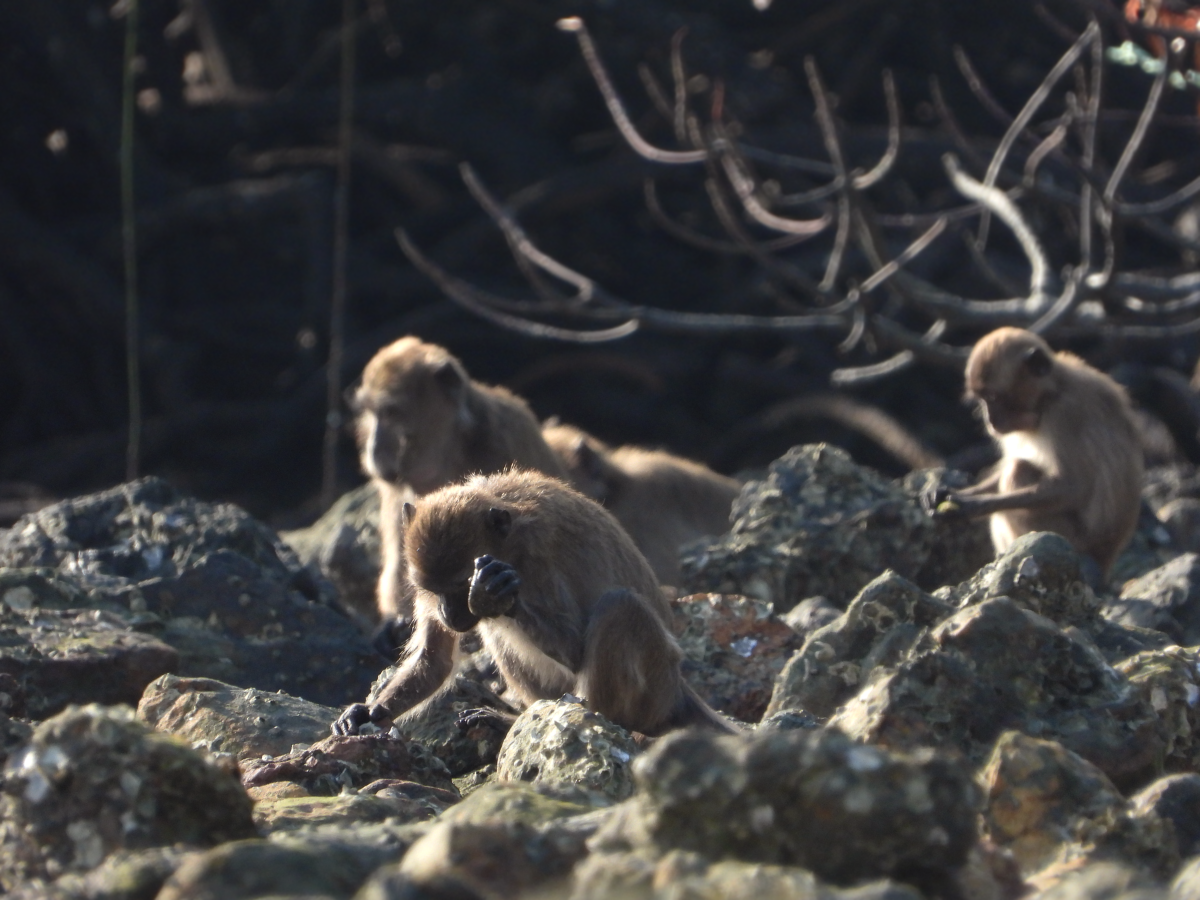Hungry Monkeys Could Be Making Stone Tools
Posted on Categories Discover Magazine

Did early hominins create their first tools by accident? And if so, how does one define tool creation, the sophisticated use of which has long set our species apart?
These are questions at the heart of a new study led by the Max Planck Institute for Evolutionary Anthropology, which could also disrupt much of Stone Age archaeology, if not intentionally. The team studied long-tailed macaque monkeys in a Thai national park. The monkeys are prolific bashers of palm nuts using a rudimentary but effective system: a smaller stone (termed a hammerstone) bashed against a larger one, the “anvil,” with a nut in between. The fact that the monkeys, including Capuchin monkeys and chimpanzees, use this method is unremarkable, however.
What has sent reverberations through science is the discovery that when the macaque tools fracture and chip, they create “flakes” that closely resemble stone age tools, which raises new questions.
Ancient Tools or Modern Stones?
So here’s the new warning: Flakes that come from areas fraught with “percussive” bashing “should not be assumed to be exclusively the result of intentional flake production,” the study says.
In other words, a million-year-old hominin tool might not be what it appears.
The team collected 1,119 stone pieces from the park, including many stone flakes that would have normally attracted a few assumptions: A person made them who understood how rocks fracture and that the person possessed fine motor skills. While the monkeys possess the latter, the former doesn’t apply, scientists believe.
To further muddy the waters, both monkeys and early humans have left behind similar flake deposits, although the hominins also drew on useful stone types not common to the local area, an important marker.
Analyzing the Stone Flakes
As a statistical experiment, the researchers compared the macaque flakes to a group of tools from the Oldowan, a 2.5-million-year-old culture that is the oldest to have used tools. Residents of modern-day Africa, they used roughly hewn “choppers” for just about anything, including animal butchering and plant chopping. The experiment found that given close similarities with the macaque flakes, 30 to 70 percent of the Oldowan-made flakes could be swapped with the monkey-made flakes.
“Our study shows that stone tool production is not unique to humans and our ancestors,” says lead author Tomos Proffitt in a press release, a researcher at the Max Planck Institute for Evolutionary Anthropology.
A 2017 study of the same monkeys found that they also used stones to crack open shellfish, and the researchers there suggested this amounted to a type of cultural transference. But the paper found this culture was pretty limited as the macaques lacked any discerning preference for rock shape or weight.
The new study also builds on a 2016 paper that found similar behaviors, and similar tool-producing, among a group of capuchin monkeys in Brazil.
Hominin tools may have started out this way, with one rock bashing against another, scientists have argued. And they now estimate the earliest human use of tools at about 3 million years ago, earlier even than the Oldowan.